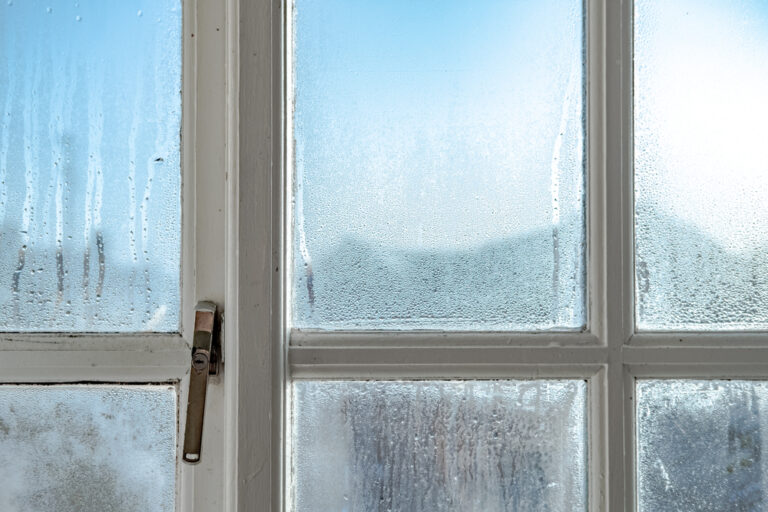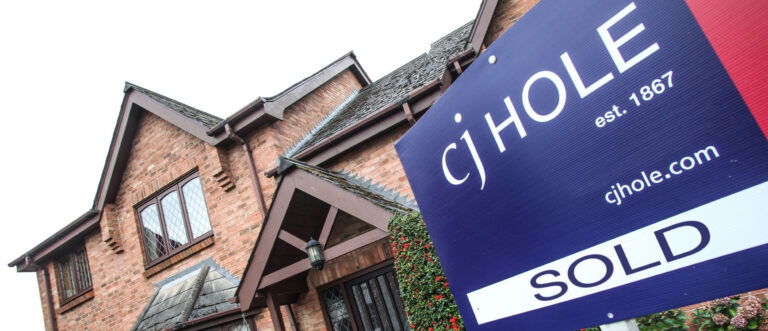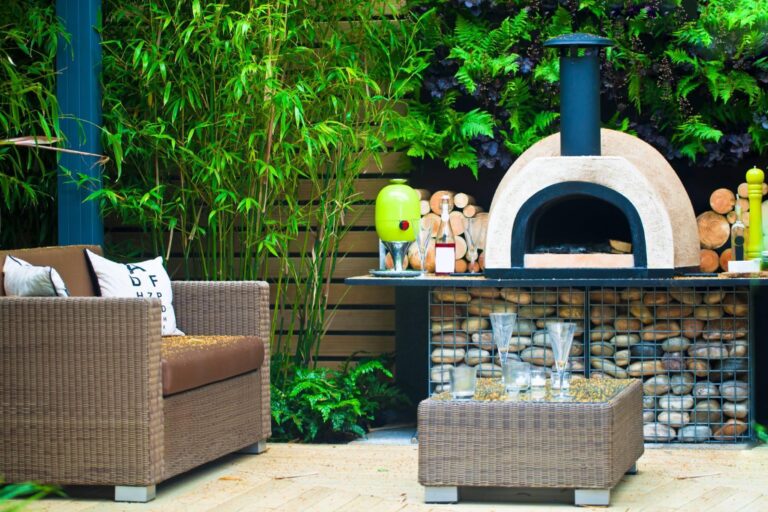Winter can be a tough time for rental properties, with rain, wind and sometimes even snow and ice causing huge problems for landlords and tenants.
The key to protecting your rental property, however, lies in winter maintenance and in this guide, we explain everything you can do to protect your property and improve its energy efficiency.
Landlord responsibilities in winter
Landlords have many responsibilities and maintaining your rental property before and during the winter is key.
Your winter responsibilities will include:
1. Exterior rental property maintenance
Under the Landlord and Tenant Act, landlords are responsible for maintaining and repairing the structure of a rental property.
In winter, rental property exteriors can face huge problems caused by cold, wet, or windy weather.
So, it’s important to ensure regular maintenance is carried out in these key areas ahead of winter:
Roof, guttering and downpipes
A damaged roof, missing tiles or blocked external pipework can lead to water leaking inside your rental property.
This can cause penetrating damp, which is not only damaging to your property but can also affect the health of your tenants.
Check your property’s roof for damage or missing tiles and ensure all guttering and downpipes are cleared of any blockages.
Clearing external guttering can also help to prevent excess water falling on walkways around your property, which could turn to ice in extremely cold weather.
Brickwork or render
Check your rental property’s brickwork or render for gaps, damage, or damp patches.
Look out for faulty or damaged pointing in brickwork, which can lead to water seeping through on to internal walls.
Ageing bricks can also become more porous, allowing moisture to penetrate through them, while cracks in render can see dampness occur on internal walls.
2. Internal pipework
Frozen pipes can cause huge damage to rental properties in winter.
Water expands when it freezes, which can see traditional copper pipework split, leading to flooding.
Prevent frozen pipes in your rental property by:
- Ensuring pipework in cold areas, such as the loft or garage, is properly insulated with foam
- Checking pipework for signs of damage and replacing if needed
- Keeping the heating on low when the property is empty
- Turning off the stopcock if your property will be empty for a long time
If you do find your rental property’s pipes have frozen, or your tenant reports the issue, it’s important to thaw them out correctly:
To thaw frozen pipes, you should:
- Turn on your property’s faucets to relieve pressure in the pipes
- Apply gentle heat to the pipe using a hairdryer, starting at the end closest to the faucet and working your way back
- Once water starts flowing from the faucet, leave it running until the blockage has completely cleared and full pressure is restored
3. Heating systems and boilers
Landlords
are also responsible for ensuring their tenants have an adequate and operational heating system, while also keeping that system maintained throughout a tenancy.
Boilers, meanwhile, are most likely to break down during the winter, when they endure far more use.
So, before winter really bites, make sure your rental property boiler is in good working order.
Does a landlord have to service a boiler?
If your rental property has a gas boiler, you’re legally obligated to have a gas safety check completed every year by a Gas Safe engineer.
How long does a landlord have to fix a broken boiler?
The Landlord and Tenant Act states that rental property boiler repairs must be carried out in a ‘reasonable time’.
Minimum heating requirements for landlords
As well as maintaining your rental property’s heating system, it must be capable of maintaining a temperature of 18°C in bedrooms and 21°C in living accommodation when the outside temperature is -1°C or lower.
All privately let properties must also comply with the Minimum Energy Efficiency Standard (MEES), meaning your property must have an Energy Performance Certificate (EPC) rating of at least ‘E’ to be legally rented out.
4. Hot water
Landlords are legally responsible for ensuring their tenants have adequate sanitation and hot water throughout their tenancy.
As well as making sure your rental property’s boiler is functioning correctly to heat water during winter, you should also:
- Ensure the property’s hot water cylinder is well insulated with a thermal jacket
- Ensure all pipework is protected with foam insulation covers
5. Landlord insurance during winter
Property damage caused by wintry weather is one of the main causes of landlord insurance claims.
So, you should ensure your landlord insurance policy has adequate cover:
- Does your policy cover you if your property is damaged by weather when unoccupied?
- Does your policy include boiler breakdown cover?
- Does your policy cover costs of accommodation for your tenants if your property becomes uninhabitable?
How to keep a rental house warm in winter
High energy bills and poor efficiency can sometimes mean rental properties are left feeling cold during the winter.
The best way to help lower your tenants’ bills and keep your property warmer is by making energy efficiency improvements like:
1. Insulating the loft and roof space
Roof and loft insulation is one of the best ways to improve your rental property’s energy efficiency, keeping it warmer during winter.
It’s estimated as much as 25% of a property’s heat is lost through the roof.
Yet roof and loft insulation remains cost effective to install and can even be done yourself in most cases.
If you do decide to insulate your roof space, however, make sure you also take steps to insulate any pipework or water tanks in your loft, as the space will become colder once insulation is in place.
2. Consider wall insulation
If your rental property was built after the 1920s, it should have a cavity wall.
Cavity wall insulation is a great way to improve your rental property’s energy efficiency and it has been compulsory in new builds since the 1990s.
If you have a cavity wall, insulation can be installed by injecting material through the external wall and into the cavity.
Depending on the size of your rental property, cavity wall insulation could be installed for between £400 and £2,000.
If your rental property has a solid wall and no cavity, insulation is still possible either internally or externally, although this process is more expensive that cavity wall insulation.
3. A modern boiler
Modern gas boilers are more energy efficient and because they are condensing boilers, the gases that would normally be expelled through the boiler’s flue are recycled through the system and used to heat water.
This means they can be as much as 90% more efficient than older models.
Condensing boiler installation became law in 2005, so if you’ve had a new boiler fitted since then, it should be a condensing model.
If you haven’t, it could be time to consider one, which will heat your rental property more efficiently and lower your tenants’ heating bills.
4. Energy efficient doors and windows
Modern, energy efficient doors and windows can be an excellent way to keep more heat inside your rental property and make it more efficient.
Modern uPVC double glazing and composite doors are popular with landlords looking to improve their rental property’s efficiency rating.
5. Provide good quality curtains and draught excluders
A more cost-effective way to keep your rental property warmer is by limiting draughts and closing good quality curtains after the sun has gone down.
While it can be a good idea to keep curtains open on sunny winter days, with the sun heating your property naturally, thick curtains can keep more heat inside after dark.
Providing your tenants with draught excluders to use at the bottom of doors can also help keep the winter chill out.
6. Seal up any gaps
If your rental property has any gaps around doors and windows which allow draughts to seep inside, seal these up for your tenants.
Expanding foam or caulk can be used to plug gaps between the window and the frame, while draught-proofing strips are a flexible solution for windows and doors that are regularly opened.
7. Give winter reminders to your tenants
One of the best ways to help your tenants keep more heat inside their rental home during winter is by educating them and providing winter reminders.
Remind them where the stopcock is
In the event of your rental property’s pipes freezing and bursting, shutting off the stopcock quickly can be the difference between minor and serious damage.
Remind your tenants where the stopcock is located and how to switch it off each winter.
Make sure they know who to contact in an emergency
Your tenancy agreement should tell your tenants who to contact in a winter emergency.
That could be you directly, or perhaps a letting agent
if your rental property is managed.
However, remind them ahead of each cold season, when issues like boiler breakdowns, flooding, or damp are more common.
Help them avoid condensation and mould
Condensation is often caused by human behaviour and habits but can lead to serious damp and mould problems in your rental property.
To limit issues with condensation, remind your tenants to:
- Ventilate the property regularly, by opening windows
- Keep window trickle vents open
- Use extractor fans when cooking or bathing, or open a window to allow moist air to escape
- Avoid drying clothes on radiators
- Keep the property’s temperature consistent, not allowing it to become too cold
Show them how to bleed radiators
Radiators should be bled ahead of each winter, so remind your tenants and show your tenants how to do this.
Removing air from radiators can keep them working efficiently – keeping your rental property warmer during winter.
Further reading…
- How to be a model tenant
- Tips for making your rental property feel like home
- Everything you need to know about wear and tear
Contact your local CJ Hole office if you are looking to find out how to protect your property during the winter months.





